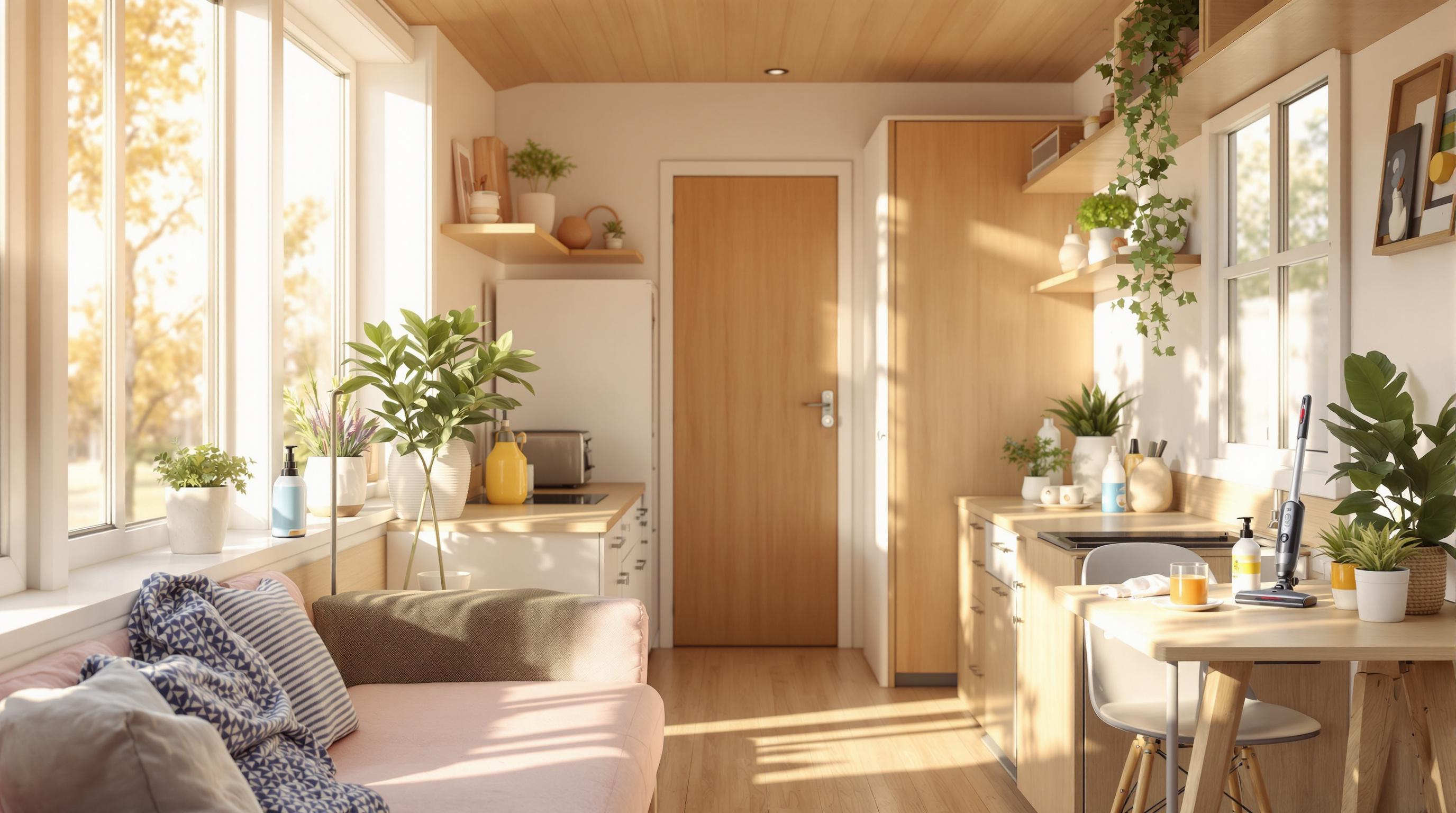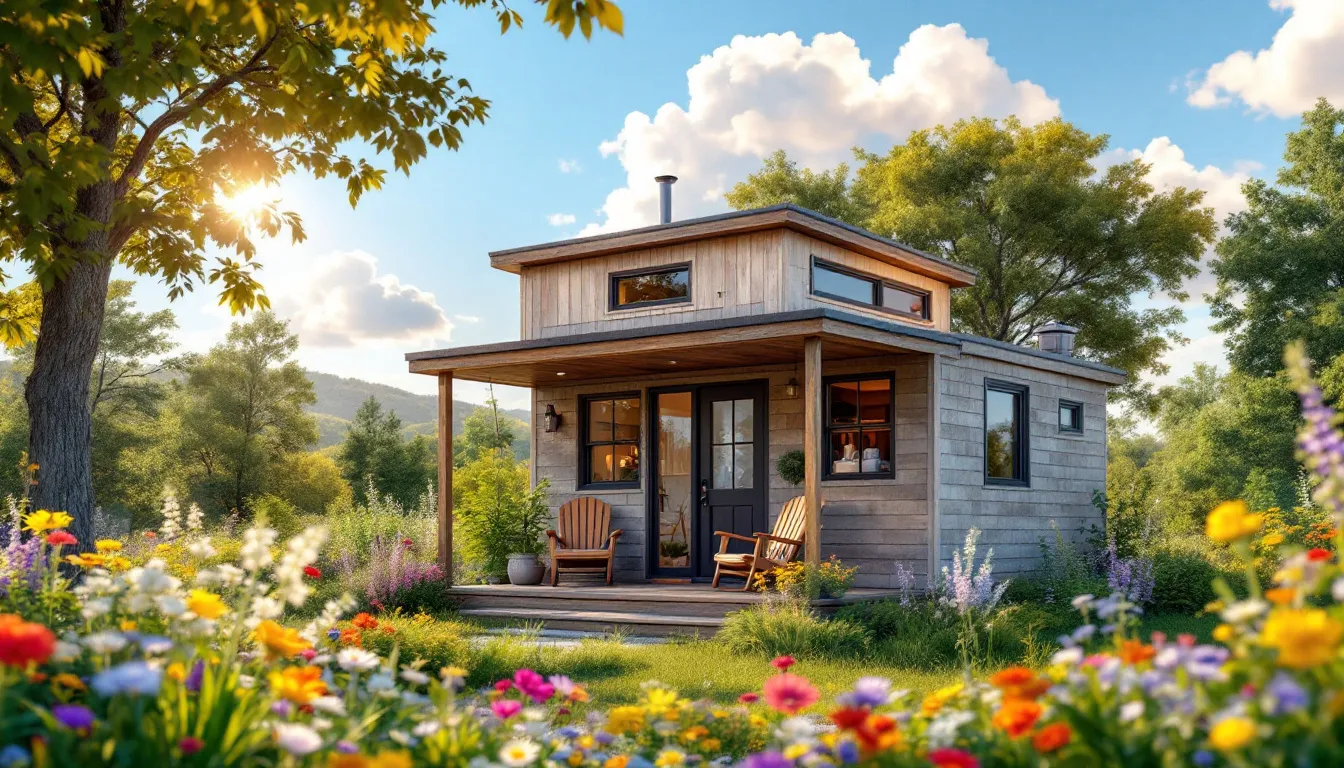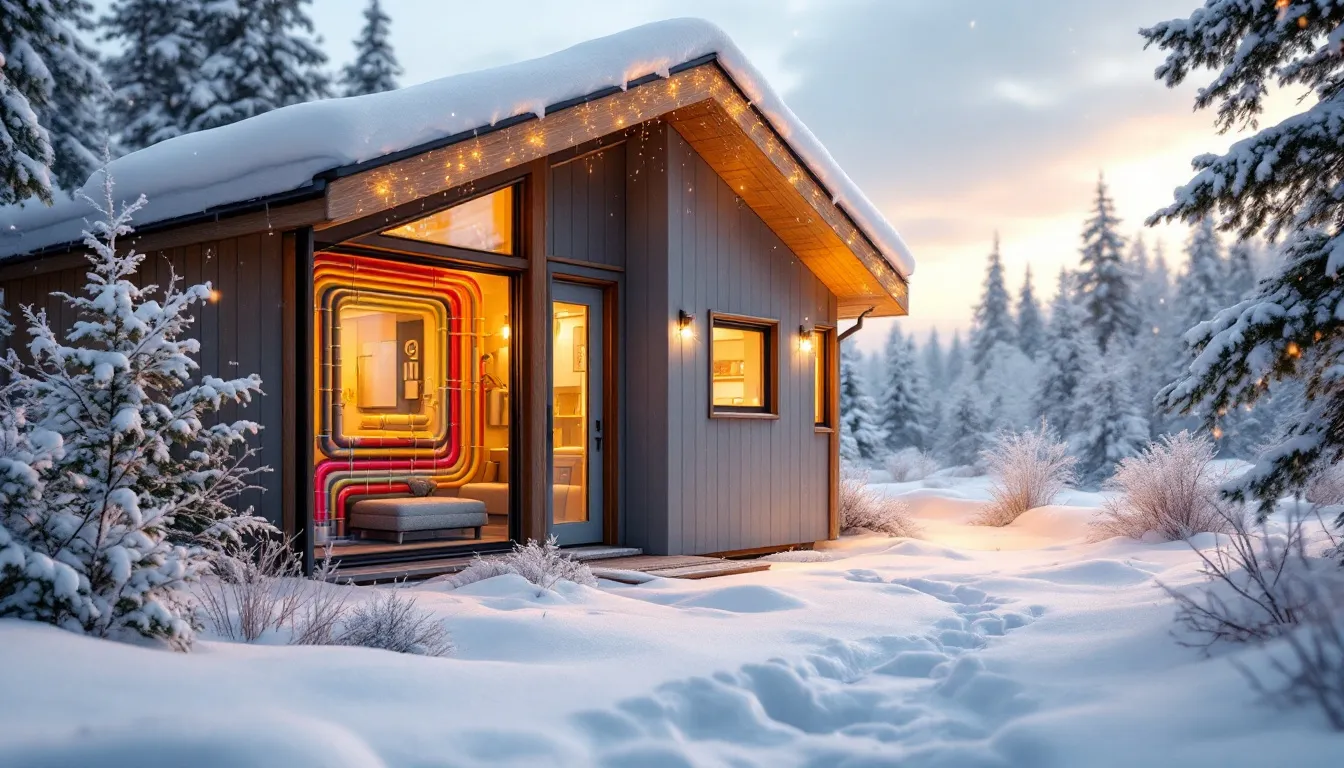Using recycled materials in tiny homes can cut construction costs by up to 50% and reduce carbon emissions by 90% compared to traditional homes. These materials also minimize waste, save resources, and add unique character to the design. Popular choices include reclaimed wood, recycled metal, and shipping containers, each offering durability and cost efficiency. Prefabrication and modular building further enhance savings and eco-friendly practices. For builders, this approach delivers affordability and sustainability in one compact package.
Related video from YouTube
Why Use Recycled Materials in Tiny Homes?
Using recycled materials in tiny house construction is a smart way to embrace eco-friendly building practices while cutting costs.
Reducing Waste and Pollution
Recycled materials can slash construction waste by up to 70% [2][4]. This means fewer materials ending up in landfills and less need for producing new raw materials. Plus, tiny homes built with recycled components can reduce carbon emissions by as much as 90% compared to traditional homes [2][4]. This is largely because of the smaller size of these homes and the reduced demand for new material production.
Lowering Construction Costs
Building with recycled materials can cut construction costs by up to 50% [1][3]. These savings come from lower material prices, sourcing locally, and using efficient prefabrication methods. When paired with modular or prefabricated designs, the cost benefits grow even further by trimming down labor expenses [1][3].
Supporting Eco-Friendly Living
Recycled materials fit right in with the tiny house movement's focus on resource conservation. They allow builders to create homes that are both environmentally responsible and full of character. Experts emphasize using high-quality recycled materials and the right building techniques [1][3] to ensure these homes are both durable and sustainable.
For tiny home builders, the combination of cost savings and reduced environmental impact makes recycled materials a practical and thoughtful choice. Up next, we’ll look at the most popular materials used in these eco-conscious homes.
sbb-itb-2ef3f3a
Types of Recycled Materials for Tiny Homes
Reclaimed Wood
Reclaimed wood is a popular choice for tiny homes due to its durability and aesthetic charm. It's often sourced from old barns, factories, or deconstructed buildings, making it an environmentally conscious option. This material can be used in various ways, such as:
- Structural framing: Ideal for load-bearing walls and support beams.
- Exterior elements: Great for siding and decorative trim.
- Interior finishes: Perfect for flooring, wall paneling, or custom furniture pieces.
Its adaptability makes it a favorite among tiny home builders looking for a rustic yet functional vibe.
Recycled Metal and Tin
Recycled metal is another durable and low-maintenance material for tiny homes. It’s especially valued for its strength and resistance to weather, making it a practical alternative to wood or vinyl. Common uses include:
- Roofing: Corrugated metal sheets provide excellent water resistance.
- Exterior siding: Offers strong protection against harsh weather.
- Structural supports: Works well for reinforcement beams and brackets.
This material is an affordable and long-lasting option for those aiming to build a sturdy and weatherproof tiny home.
Shipping Containers
Shipping containers bring a unique and efficient approach to tiny house construction. With proper insulation and modifications, they can transform into comfortable, durable living spaces. Their standardized sizes (typically 20 or 40 feet in length) simplify planning and design.
| Feature | Benefit |
|---|---|
| Structural Integrity | Handles heavy loads and tough conditions. |
| Weather Resistance | Built to withstand harsh environments. |
| Cost Efficiency | Often more affordable than traditional materials. |
| Quick Installation | Reduces both labor and construction time. |
Using shipping containers not only cuts costs but also aligns with the environmentally conscious mindset of tiny house living. Their practicality and unique design possibilities make them a standout choice for eco-friendly builders.
Research and Examples of Cost Savings
Cost Comparisons
Studies have highlighted the financial benefits of using recycled materials in tiny house construction. For example, projects utilizing reclaimed wood for structural components saved an average of $15,000 per build [1][3].
| Construction Method | Average Cost Savings | Additional Benefits |
|---|---|---|
| Reclaimed Wood Usage | $15,000 | Unique aesthetic, reduced use of new resources |
| Shipping Container Conversion | $10,000 | Quicker build time, built-in weather resistance |
| Prefabrication Techniques | 30% labor reduction | Cuts construction waste by 50% |
In addition to cutting costs, these methods have the added benefit of reducing resource consumption and waste.
Studies on Environmental Benefits
While saving money is a strong incentive, the environmental advantages of using recycled materials in tiny house construction are equally compelling. Research shows that tiny homes built with recycled materials produce just 2,000 pounds of CO2 annually, compared to the 28,000 pounds generated by traditional homes [2].
Prefabrication and modular construction methods also play a key role in reducing environmental impact. A study by Billion Bricks highlights how these techniques not only minimize waste but also streamline the construction process [3].
"Using recycled materials in tiny house construction supports eco-friendly living by reducing waste, lowering carbon emissions, and promoting sustainable resource management" [1][2][5]
Summary and Next Steps
Using recycled materials in tiny house construction can lead to noticeable cost savings and a reduction in waste. Here are some practical strategies to get the most out of recycled materials for your project:
| Strategy | Benefits and Tips |
|---|---|
| Material Sourcing | Cut costs by up to 50% by exploring salvage yards and recycling centers. |
| Prefabrication | Save around 30% on labor by incorporating modular designs. |
| Passive Design | Reduce energy expenses by focusing on insulation and airtight construction. |
Helpful Resources for Tiny House Builders
Finding quality recycled materials and reliable support is easier with the right resources. Websites like Tiny Houses For Sale, Rent, and More connect builders to suppliers and experienced contractors specializing in tiny house projects.
Before starting construction, check with local authorities about building codes and zoning regulations. Collaborating with builders who are familiar with recycled materials and local requirements can help ensure a smooth process and better results [1][3]. By tapping into these resources and strategies, you can effectively achieve both cost efficiency and waste reduction for your tiny house.



